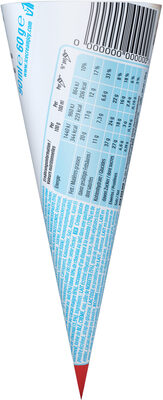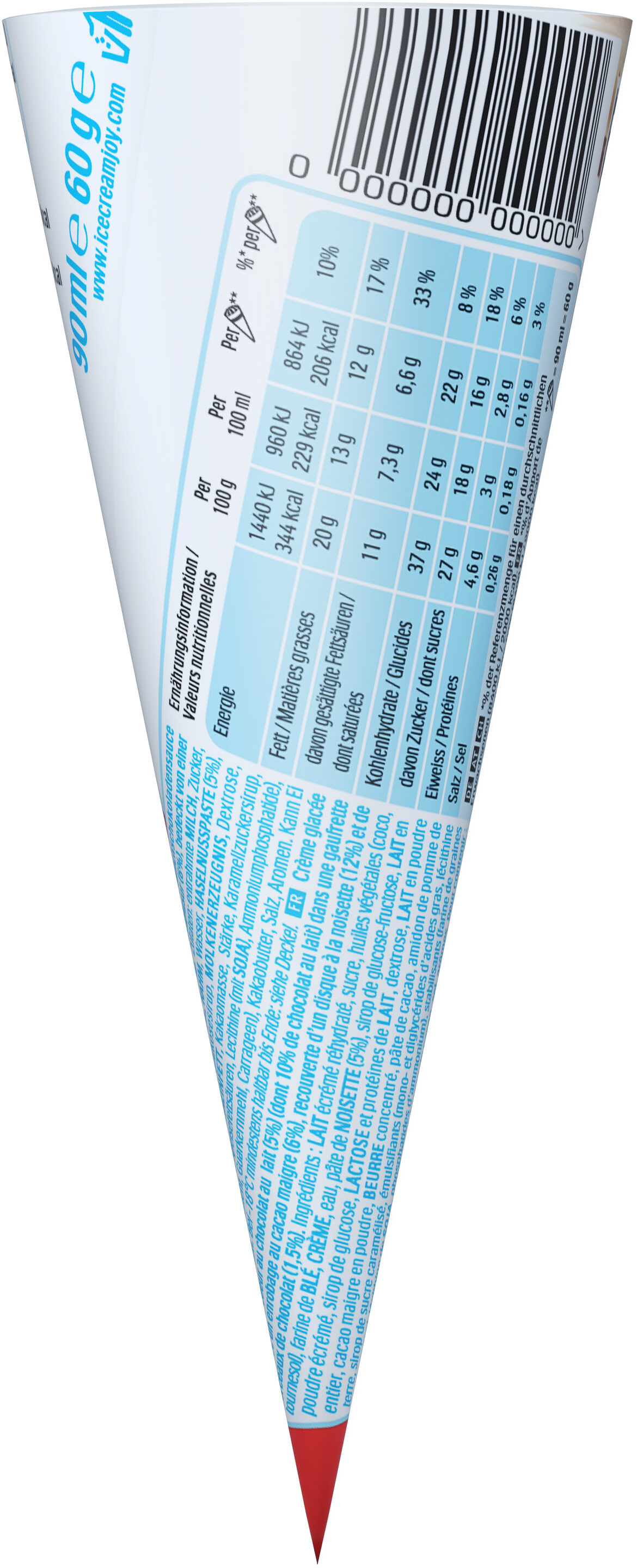Kinder Bueno - Ice cream - 60 g
This product page is not complete. You can help to complete it by editing it and adding more data from the photos we have, or by taking more photos using the app for Android or iPhone/iPad. Thank you!
×
Some of the data for this product has been provided directly by the manufacturer unilever-france.
Barcode: 8714100895139 (EAN / EAN-13)
Common name: hazelnut dairy ice cream and milk chocolate sauce finger (5%) (made with 10% milk chocolate) in a wafer cone (13%) with cocoa flavou
Quantity: 60 g
Packaging: fr:Product
Brands: Kinder
Categories: en:Desserts, en:Frozen foods, en:Frozen desserts, en:Ice creams and sorbets, Reòiteag, en:Ice cream cones
Labels, certifications, awards:
en:Green Dot
Countries where sold: An Fhraing, An Spàinn, An Eilbheis, An Rìoghachd Aonaichte
Matching with your preferences
Environment
Carbon footprint
Packaging
Transportation
Other information
Preparation: Pour une dégustation encore plus onctueuse de votre crème glacée, sortez-le quelques minutes avant de servir.
Conservation conditions: A conserver à -18°C.
Customer service: Unilever France, 20 rue des Deux Gares, 92842 Rueil-Malmaison Cedex.
Report a problem
Data sources
Product added on by kiliweb
Last edit of product page on by thaialagata.
Product page also edited by autorotate-bot, date-limite-app, elcoco, foodrepo, musarana, openfoodfacts-contributors, tacite-mass-editor, unilever-france, yuka.R2Z3K0ZJSVJxL2dGdXZNeTdqVGY5K0oxMmMrdmZtZUhPZXRPSUE9PQ, yuka.WXBJZEtJTUh1TkFOdy9ZajJ5aUlvY05OeUpxaVVFS3VDK1FXSWc9PQ, yuka.YmZBN0FwOFpsL0JibnN3ZHdqWFJ4LzlvOTQrWERVYVNFYlVhSVE9PQ.











